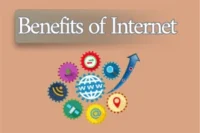Full Stack Web Development: Complete Guide for Beginners to Advanced
Published: 16 Jul 2025
In today’s digital world, full stack web development has become one of the most in-demand skills. Whether you’re building a personal portfolio, developing an enterprise application, or launching a startup, knowing both front end development and back end programming gives you a competitive edge.
This guide walks you through everything you need to know from the basics of HTML and CSS to mastering frameworks like React, Node.js, and working with databases like MongoDB.
What is Full Stack Web Development?
Full stack web development refers to the ability to work on both the client side (front end) and the server side (back end) of a web application.
- Front end: What users see and interact with.
- Back end: The logic, database, and server that power the application.
- Database: Stores and retrieves data efficiently and securely.
A full stack developer handles all these layers, ensuring seamless communication between the browser and the server.
Front-End Development
Front end development focuses on the user interface (UI) and user experience (UX) of a website or app.
Key Technologies:
- HTML (HyperText Markup Language): The foundation of web content.
- CSS (Cascading Style Sheets): Styles the layout, colors, and fonts.
- JavaScript: Adds interactivity and dynamic behavior.
Popular Front-End Frameworks:
- React (by Facebook): Component-based, high performance.
- Angular (by Google): Enterprise-level, TypeScript-based.
- Vue.js: Lightweight and easy to learn for beginners.
Back-End Development
Back end programming powers the functionality behind the scenes—handling APIs, databases, and server-side logic.
Common Back-End Languages:
- Node.js (JavaScript runtime)
- Python (Django, Flask)
- PHP, Ruby on Rails, Java (Spring)
Responsibilities:
- Create and manage databases
- Develop APIs (RESTful, GraphQL)
- Implement authentication and authorization
- Optimize performance and scalability
4. Databases and Storage
Data is a core part of every application. Full stack developers must understand how to integrate and manage databases.
Two Main Types:
- SQL (Structured): MySQL, PostgreSQL – uses structured queries.
- NoSQL (Non-Structured): MongoDB, Firebase – stores data in flexible formats like JSON.
MongoDB is widely used in full stack projects, especially with the MERN stack.
Popular Full Stack Tech Stacks
A tech stack is a combination of tools and frameworks used to build an application.
Common Full Stack Stacks:
- MERN: MongoDB, Express.js, React, Node.js
- MEAN: MongoDB, Express.js, Angular, Node.js
- LAMP: Linux, Apache, MySQL, PHP
- JAM stack: JavaScript, APIs, Markup
The MERN stack is one of the most beginner-friendly and widely used in startups and modern apps.
Skills Required to Become a Full Stack Developer
To succeed in full stack development, you’ll need a mix of technical and soft skills.
Technical Skills:
- HTML, CSS, JavaScript
- Frameworks: React, Angular, Node.js
- Databases: MongoDB, MySQL
- Version control: Git, GitHub
- APIs, authentication, and security
Soft Skills:
- Problem-solving and debugging
- Agile development methods
- Collaboration and communication
Learning Paths and Courses
Whether you’re self-taught or enrolled in a course, there are many ways to learn full stack development:
- W3Schools: Ideal for beginners to learn basics like HTML/CSS.
- Coursera: Offers structured full stack development courses from top universities and companies.
- MongoDB University: Great for mastering NoSQL and database integration.
- YouTube and FreeCodeCamp: Free resources with project-based learning.
Career Opportunities and Salaries
Full stack developers are among the highest-paid professionals in tech.
Popular Job Roles:
- Full Stack Developer
- Web Developer
- Software Engineer
- Front-End/Back-End Developer
Average Salaries (2025):
- USA: $90,000 – $140,000/year
- India: ₹6L – ₹20L/year
- Remote roles: Growing due to flexible project demand
9. Challenges and Best Practices
Being a full stack developer is rewarding, but it comes with challenges:
Common Challenges:
- Keeping up with constantly evolving frameworks
- Managing both front and back end efficiently
- Ensuring security and scalability
Best Practices:
- Follow coding standards and use version control
- Write modular and reusable code
- Focus on performance and testing
- Stay updated with new tools and trends
Conclusion
Full stack web development empowers you to build complete applications from design to deployment. With a solid understanding of both front end and back end development, and tools like React, Node.js, and MongoDB, you can become a versatile and in-demand developer.
Start your journey today by picking a stack, building real projects, and continuously learning. The world of full stack is full of possibilities!
Frequently Asked Questions (FAQs)
Here are important FAQs to help you better understand full stack development.
Full stack web development refers to the development of both the front-end (client side) and back-end (server side) of a web application. A full stack developer handles the entire process, from designing the interface to managing databases and servers.
You should start with HTML, CSS, and JavaScript for the front end. For the back end, popular choices include Node.js, Python, PHP, or Java. Knowledge of databases like MongoDB or MySQL is also essential.
It typically takes 6 months to 1 year to become proficient, depending on your learning pace, background, and whether you’re studying full-time or part-time.
Yes, full stack development is a high-demand career offering excellent salaries, diverse job roles, and the flexibility to work on freelance, remote, or startup projects.
The MERN stack (MongoDB, Express.js, React, Node.js) is highly recommended for beginners because it’s JavaScript-based and widely used in modern web development.
Yes, many full stack developers are self-taught. Online platforms like Coursera, W3Schools, and FreeCodeCamp offer comprehensive learning paths without the need for a formal degree.
Front end involves designing the interface users interact with (using HTML, CSS, JavaScript), while back end involves server-side logic, databases, and APIs that power the application behind the scenes.
Common tools include:
- Code Editors: VS Code, Sublime Text
- Version Control: Git, GitHub
- Front-End: React, Angular, Vue.js
- Back-End: Node.js, Django, Express
- Databases: MongoDB, PostgreSQL
Absolutely. Companies are increasingly looking for developers who can handle both ends of development to save resources and streamline workflows. Full stack developers remain highly valuable in 2025 and beyond.
Not necessarily. You can specialize in either front end or back end. However, learning both increases your versatility and job opportunities as a full stack developer.

- Be Respectful
- Stay Relevant
- Stay Positive
- True Feedback
- Encourage Discussion
- Avoid Spamming
- No Fake News
- Don't Copy-Paste
- No Personal Attacks

- Be Respectful
- Stay Relevant
- Stay Positive
- True Feedback
- Encourage Discussion
- Avoid Spamming
- No Fake News
- Don't Copy-Paste
- No Personal Attacks





